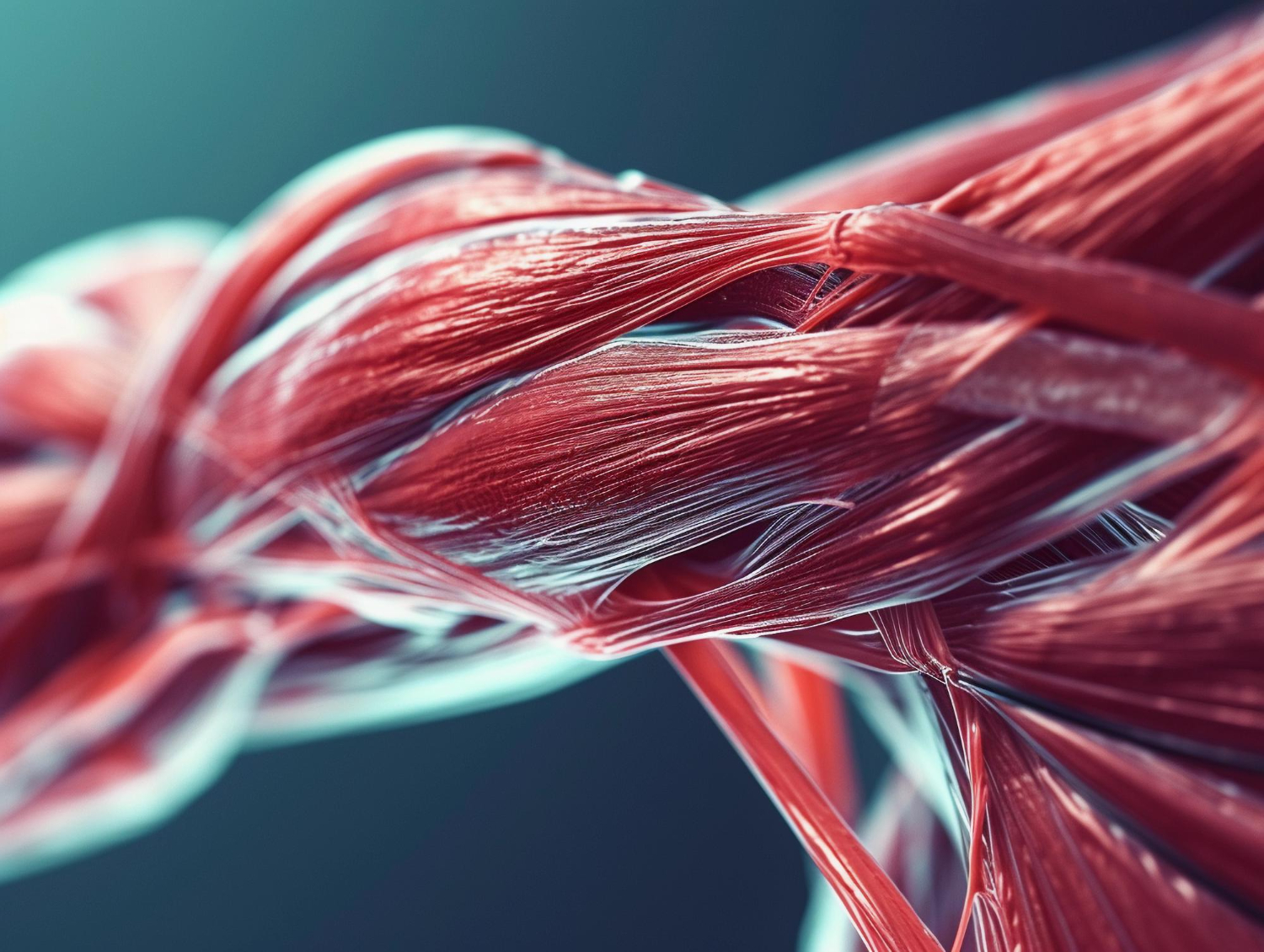Bounce Back Faster: The Power of Peptides in Injury Repair and Recovery
The Healing Revolution: How Peptides Are Transforming Recovery from Injuries
Injuries, whether from sports, accidents, or daily life, can be a significant setback, impacting our mobility, performance, and overall quality of life. The body has an innate capacity to heal, but this process can often be slow and sometimes incomplete. Exciting advancements in peptide research are offering new hope for accelerating and enhancing tissue repair, allowing individuals to bounce back faster and more fully from a wide range of injuries. At the Institute for Regenerative Biotechnology & Life Sciences (IRBLS), we are dedicated to exploring these cutting-edge therapeutic modalities. This article will delve into the remarkable world of peptides for injury repair, focusing on key players like BPC-157 and TB-500, and how they are revolutionizing recovery.
Traditional injury management often involves rest, ice, compression, elevation (RICE), physical therapy, and sometimes surgery. While these approaches are valuable, peptides offer a way to augment the healing process at a cellular and molecular level, promoting more rapid and robust regeneration of damaged tissues, including muscles, tendons, ligaments, bones, and even nerves.
How Peptides Facilitate Injury Repair and Accelerate Recovery
Peptides can promote healing through a multitude of interconnected mechanisms:
- Promoting Angiogenesis (New Blood Vessel Formation): Adequate blood supply is critical for delivering oxygen, nutrients, and healing factors to injured tissues. Peptides like BPC-157 and TB-500 can stimulate the growth of new blood vessels into the damaged area.
- Reducing Inflammation: While acute inflammation is a necessary part of the initial healing response, chronic or excessive inflammation can impede repair and cause further damage. Many reparative peptides have potent anti-inflammatory effects, helping to create a more favorable environment for healing.
- Stimulating Growth Factor Production: Peptides can upregulate the production of various growth factors (e.g., Vascular Endothelial Growth Factor – VEGF, Fibroblast Growth Factor – FGF) that are essential for cell proliferation, differentiation, and tissue regeneration.
- Enhancing Collagen Synthesis and Deposition: Collagen is the primary structural protein in connective tissues. Peptides can stimulate fibroblasts to produce more collagen and organize it effectively for strong tissue repair.
- Promoting Cell Migration and Proliferation: Healing requires cells like fibroblasts, endothelial cells, and immune cells to migrate to the injury site and proliferate. Peptides can enhance these processes.
- Protecting Cells from Damage (Cytoprotection): Some peptides can protect cells from further damage caused by ischemia (lack of blood flow), toxins, or oxidative stress.
- Modulating the Extracellular Matrix (ECM): The ECM provides the scaffold for tissue repair. Peptides can influence its composition and remodeling for optimal healing and reduced scar tissue formation.
Key Peptides for Injury Repair and Recovery
Two peptides, in particular, have gained widespread recognition for their exceptional healing properties:
1. BPC-157 (Body Protective Compound 157)
BPC-157 is a synthetic peptide composed of 15 amino acids, derived from a protective protein found in human gastric juice. It has demonstrated remarkable systemic healing capabilities across a vast range of tissues.
- Why it’s a leading reparative peptide: BPC-157 is known for its ability to accelerate the healing of muscles (tears, contusions), tendons (tendinopathy, tears), ligaments (sprains, tears), bones (fractures), and even the gastrointestinal tract (ulcers, IBD, leaky gut, as discussed in a previous article). It also has neuroprotective effects and can aid in nerve regeneration.
- How it works: Its mechanisms are diverse and include promoting angiogenesis, upregulating growth factors, exerting anti-inflammatory effects, protecting organs (organo-protection), and modulating nitric oxide pathways. It can be administered orally (particularly effective for gut issues) or via subcutaneous or intramuscular injection for systemic or localized effects.
- Key Benefits for Injury: Faster recovery times, reduced pain and inflammation, improved functional recovery, and potentially stronger repaired tissue with less scar formation.
2. TB-500 (Thymosin Beta-4)
TB-500 is the synthetic version of Thymosin Beta-4, a naturally occurring 43-amino acid peptide found in virtually all human and animal cells. It plays a crucial role in tissue repair, regeneration, and inflammation control.
- Why it’s a powerful healing agent: TB-500 promotes cell migration (including endothelial cells, keratinocytes, and stem cells to the injury site), differentiation, and survival. It upregulates actin (a critical protein for cell structure and movement), reduces inflammation, promotes angiogenesis, and encourages ECM remodeling. It is known for its ability to heal soft tissue injuries, reduce scar tissue, and improve flexibility.
- How it works: It interacts with actin and influences various signaling pathways involved in cell motility, differentiation, and inflammation. It is typically administered via subcutaneous or intramuscular injection.
- Key Benefits for Injury: Accelerated healing of muscle, tendon, ligament, skin, and eye injuries; reduced inflammation and pain; increased flexibility; and promotion of hair growth (an added benefit for some).
The Synergistic Power of BPC-157 and TB-500: Often, BPC-157 and TB-500 are used together (stacked) as they have complementary and synergistic effects on tissue repair, potentially leading to even faster and more comprehensive healing than either peptide used alone.
For individuals seeking a foundational understanding of how peptides can contribute to overall vitality and help them achieve an optimized state of being, including enhanced recovery capabilities, “Peptides Book: The Complete Beginners Guide To Peptides – Hack Secrets Of Longevity And Vitality – Become a Super Human” offers an excellent and accessible introduction. This guide from The Peptide Book Collection Series makes complex science understandable. You can explore this beginner-friendly resource here.
For a comprehensive exploration of the vast array of peptides, their mechanisms, and their roles in health optimization, including detailed information on reparative peptides like BPC-157 and TB-500, “PEPTIDES – The Complete Peptide Encyclopedia: A PhysicianS Guide to Health Optimization” serves as the definitive reference. This cornerstone of The Peptide Book Collection Series is invaluable for anyone serious about understanding peptide therapy. Discover this encyclopedic guide here.
Other Peptides Contributing to Tissue Repair
While BPC-157 and TB-500 are front-runners, other peptides can also contribute to injury recovery:
- Growth Hormone Secretagogues (e.g., CJC-1295, Ipamorelin): By increasing GH and IGF-1 levels, these peptides can support the repair and growth of various tissues, including muscle and bone, as part of a broader anabolic and regenerative effect.
- GHK-Cu (Copper Peptide): Known for its skin healing and collagen-boosting properties, GHK-Cu can also aid in the repair of other connective tissues and has anti-inflammatory effects.
Integrating Peptides into an Injury Recovery Plan
Peptide therapy for injury repair should be part of a comprehensive recovery strategy:
- Accurate Diagnosis: Proper diagnosis of the injury by a healthcare professional is crucial to determine the best course of treatment.
- Appropriate Rest and Rehabilitation: Peptides can accelerate healing, but they don’t replace the need for appropriate rest, physical therapy, and a gradual return to activity.
- Nutritional Support: Adequate protein, vitamins (especially C and D), and minerals (like zinc and magnesium) are essential for tissue repair.
- Professional Guidance: The use of reparative peptides should always be overseen by a healthcare provider experienced in their application. They can determine the correct peptides, dosages, administration routes, and duration of therapy based on the specific injury and individual needs.
Understanding the specific protocols and clinical applications for peptides like BPC-157 and TB-500 requires specialized knowledge. “Peptide Protocols Mastery: The Clinical Applications Guide – Unlocking the Secrets to Health, Healing, and Longevity” provides detailed, evidence-based strategies for healthcare practitioners and highly informed individuals. This practical guide from The Peptide Book Collection Series is essential for effective and safe implementation. Explore this mastery guide here.
IRBLS: Championing Faster, Fuller Recovery Through Peptide Science
Injuries no longer have to mean prolonged downtime and incomplete healing. Peptides like BPC-157 and TB-500 are at the vanguard of regenerative medicine, offering powerful tools to accelerate tissue repair, reduce inflammation, and restore function more effectively than ever before. Whether you are an athlete striving to return to peak performance or an individual seeking relief from a nagging injury, peptide therapy holds significant promise.
At IRBLS, we are committed to providing education on these transformative health solutions. By understanding the potential of peptides for injury repair, you can engage in informed discussions with your healthcare provider and explore innovative options to optimize your recovery journey.
We encourage you to delve into the comprehensive resources available in The Peptide Book Collection Series to further your knowledge of how these remarkable molecules can help you heal faster and live a more active, pain-free life.


0 Comments